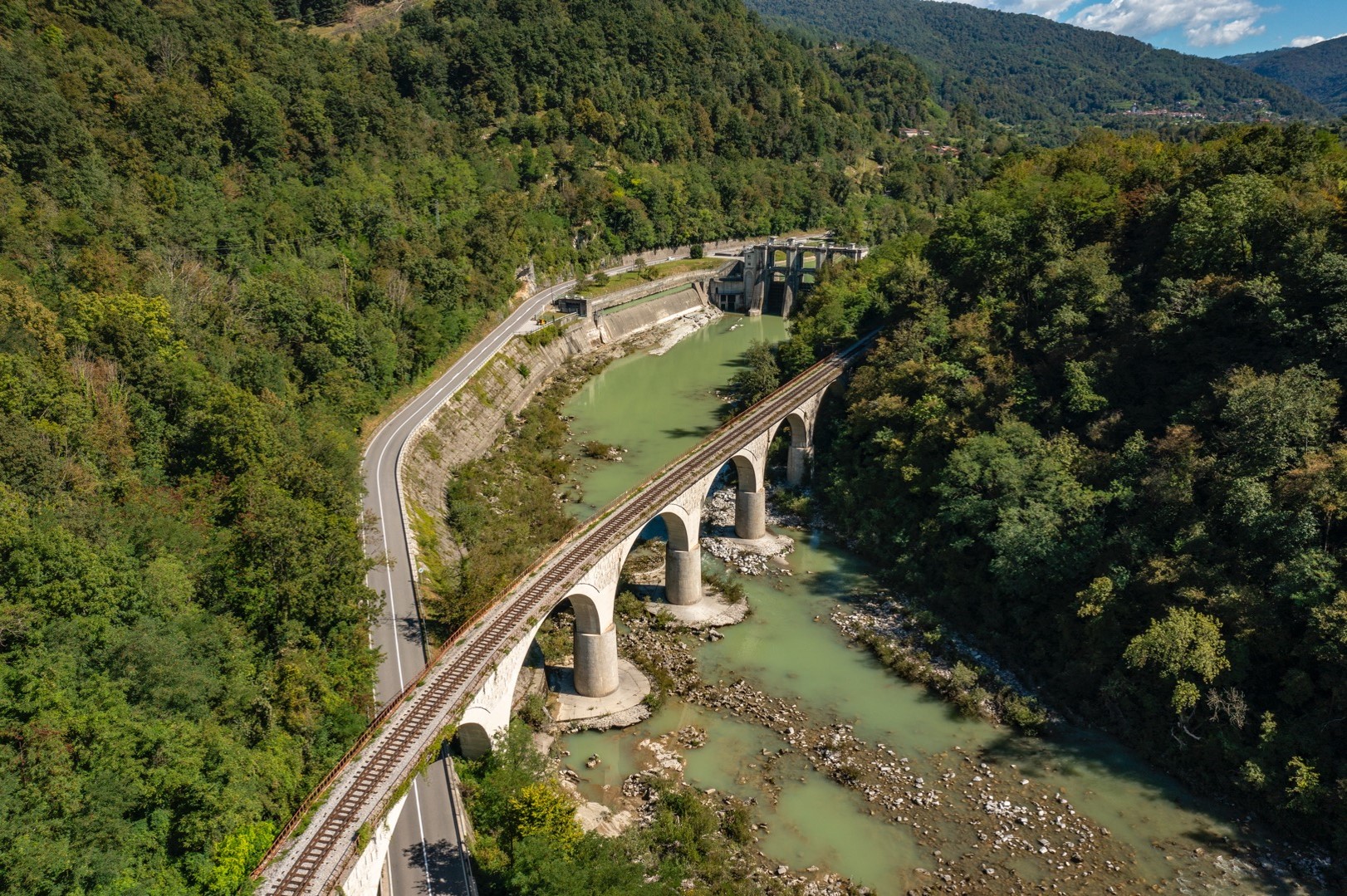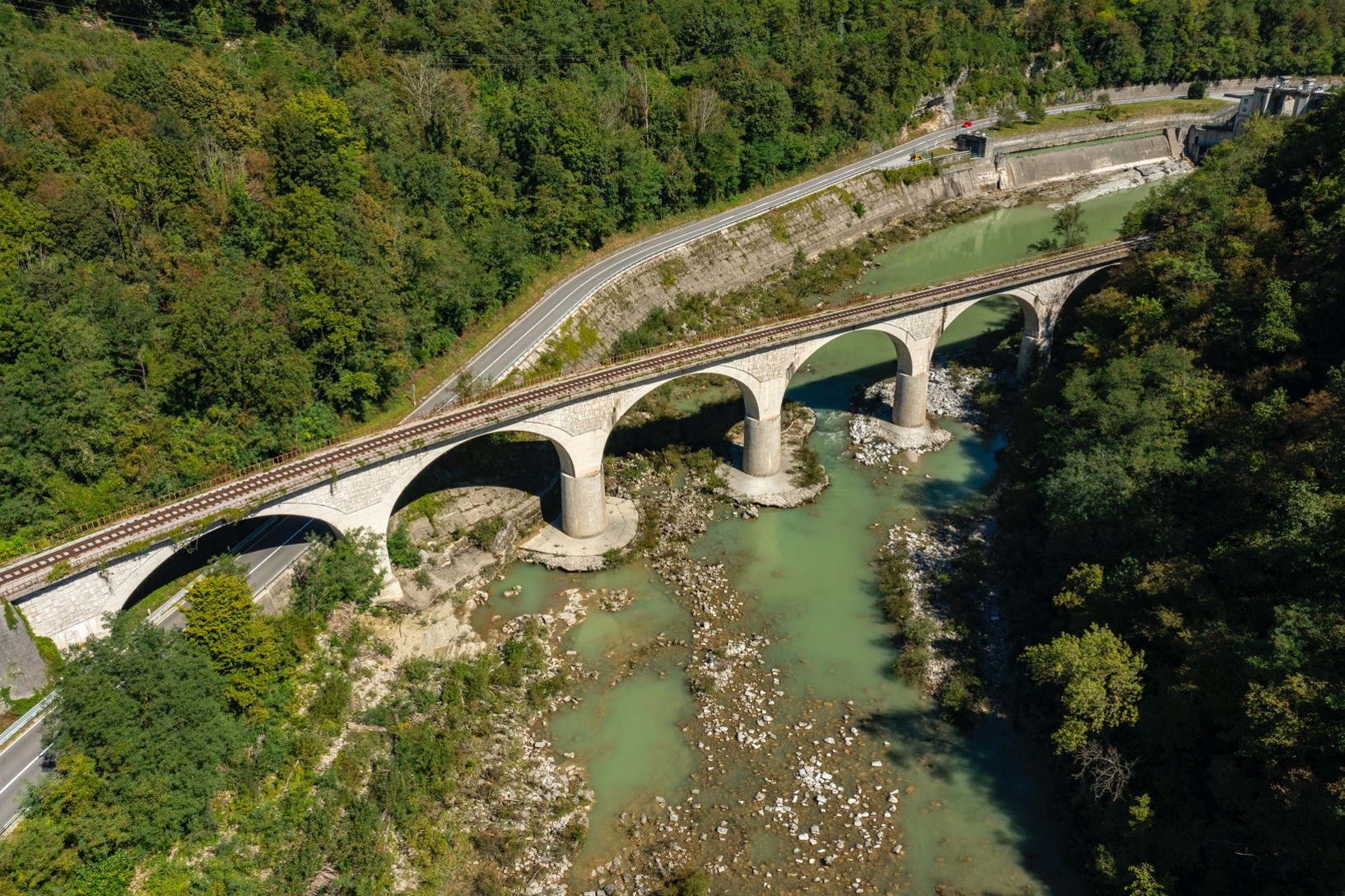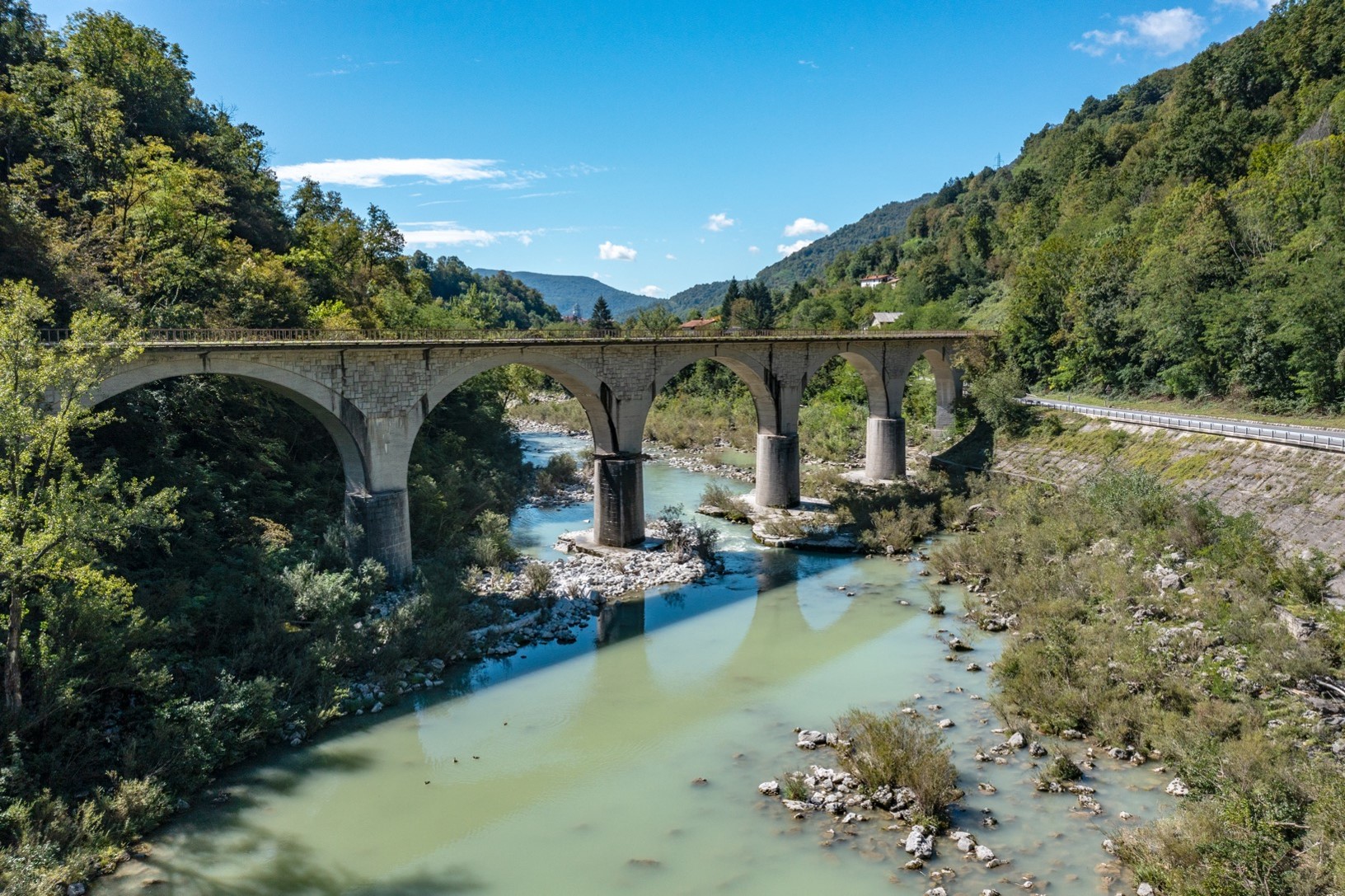ajba pri kanalu
Ajba Rail Bridge
Gorazd HUMAR
HISTORY
NO WAR SPARED THE FORMER STONE BRIDGE
In 1906, a substantial stone railway bridge was constructed over the Soča-Isonzo River at Ajba near Kanal (Aiba di Canale d’Isonzo)—though it would later be destroyed during World War II. Despite its considerable size, the bridge lived in the shadow of the more famous Solkan (Salcano) Bridge, just 15 kilometres away. The structure was an integral component of the Transalpine railway line, one of the most sophisticated sections of the second rail connection between western Austria’s industrial heartland and the port of Trieste.In 1915, nine years after its inauguration, the Transalpina railway’s function and significance transformed dramatically with the onset of the Isonzo Front. During the Third Battle of the Isonzo in October 1915, the Austro-Hungarian army, facing intense pressure from Italian troops, withdrew from Kanal to the left bank of the Soča-Isonzo. They destroyed one of the bridge’s three 40-metre arches during their retreat at Ajba. Following the Caporetto breakthrough in the spring of 1918, the Austro-Hungarian army restored rail traffic by constructing a temporary Roth Waagner-type iron bridge to replace the destroyed arch. The Italian State Railways subsequently reinforced the infrastructure in 1927 by reconstructing the damaged arch in stone. The bridge later became a strategic target during World War II, sustaining significant damage from Allied air operations. During one of many bombardments, a bomb struck the infrastructure, causing the central arch—the same one destroyed in World War I—to collapse once again; however, the February 1945 bombings wrecked the bridge. After the war, under the Allied administration, a temporary Roth Waagner-type iron bridge was built on the surviving piers. This bridge served until 1954, when the current structure replaced it.
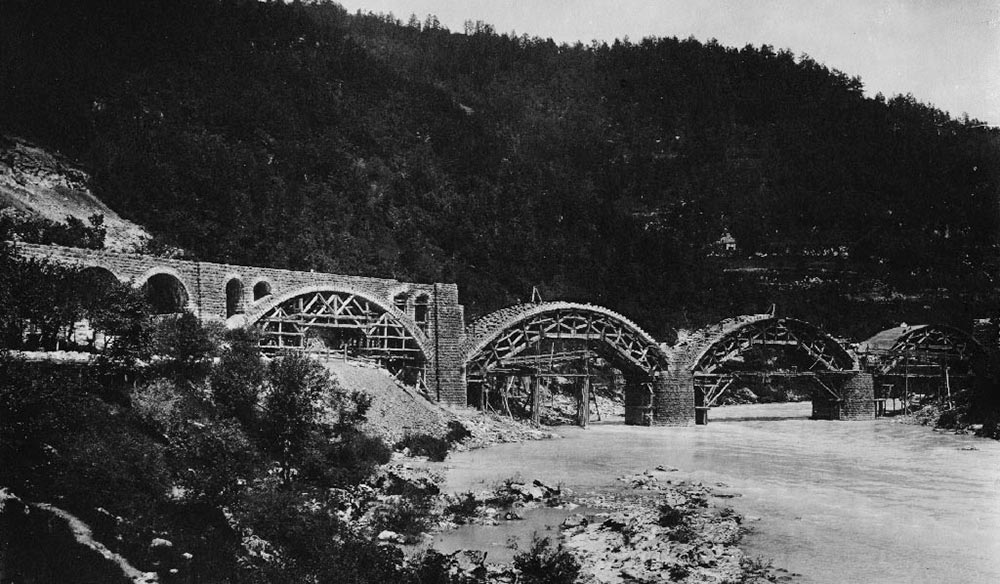

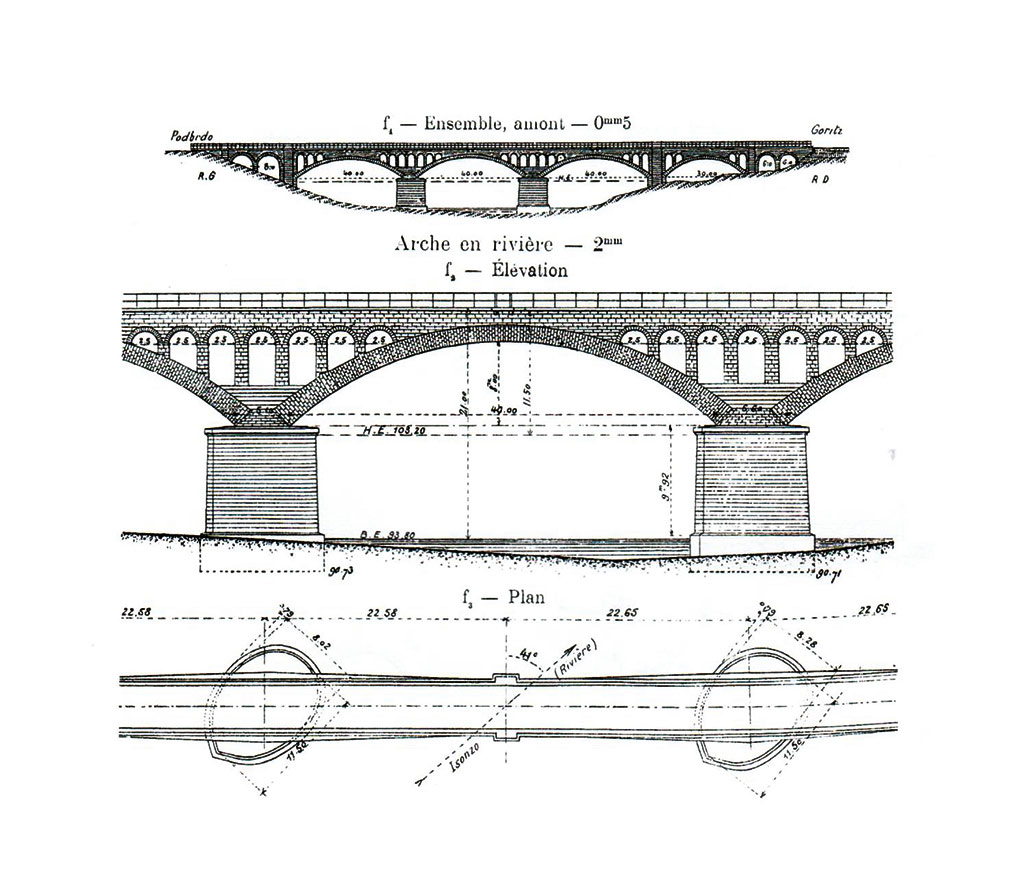
BRIDGE CONSTRUCTION AND STRUCTURAL ENGINEERING
DESCRIPTION OF THE ORIGINAL BRIDGE - 1906
When constructed in 1906, the bridge—with its three 40-meter arches and one 30-meter arch, spanning 242.5 meters in total length—was the longest stone bridge on the Austro-Hungarian railway and the third longest stone railway bridge worldwide. The three large arches varied in thickness from 2.10 meters at their base to 1.40 meters at their centre. The bridge’s most distinctive features were its piers, especially the two resting directly in the Soča-Isonzo riverbed. These unusually massive pillars had seemingly excessive proportions, but for a good reason: all strategic infrastructure of the Transalpina was engineered to meet Austrian General Staff specifications for wartime resilience.In 1906, architect Otto Wagner’s studio designed the bridge’s cast iron railing, while the substantial fortifications were constructed on both sides for defence purposes.
DESCRIPTION OF THE NEWLY CONSTRUCTED BRIDGE - 1954
In 1954, a new reinforced concrete arch bridge was built alongside where the original stone bridge once stood. The load-bearing structure comprises six arches, each spanning 25 metres, creating a total length of 242 metres—nearly identical to the original bridge. A distinctive feature is the side wall cladding made of hand-squared stone slabs, which echoes the aesthetics of its predecessor. The construction required demolishing two adjacent military fortifications to achieve optimal roadway alignment. New railings were installed to replace the original ones, which had been destroyed when the previous bridge collapsed. In the Soča-Isonzo riverbed, the piers of the old stone bridge of Ajba are still visible. Together with the Solkan Bridge, this remarkable structure represents one of the last great stone bridges in human civilisation’s history.BRIDGE CONSTRUCTION AND STRUCTURAL ENGINEERING
DESCRIPTION OF THE ORIGINAL BRIDGE - 1906
When constructed in 1906, the bridge—with its three 40-meter arches and one 30-meter arch, spanning 242.5 meters in total length—was the longest stone bridge on the Austro-Hungarian railway and the third longest stone railway bridge worldwide. The three large arches varied in thickness from 2.10 meters at their base to 1.40 meters at their centre. The bridge’s most distinctive features were its piers, especially the two resting directly in the Soča-Isonzo riverbed. These unusually massive pillars had seemingly excessive proportions, but for a good reason: all strategic infrastructure of the Transalpina was engineered to meet Austrian General Staff specifications for wartime resilience.In 1906, architect Otto Wagner’s studio designed the bridge’s cast iron railing, while the substantial fortifications were constructed on both sides for defence purposes.
DESCRIPTION OF THE NEWLY CONSTRUCTED BRIDGE - 1954
In 1954, a new reinforced concrete arch bridge was built alongside where the original stone bridge once stood. The load-bearing structure comprises six arches, each spanning 25 metres, creating a total length of 242 metres—nearly identical to the original bridge. A distinctive feature is the side wall cladding made of hand-squared stone slabs, which echoes the aesthetics of its predecessor. The construction required demolishing two adjacent military fortifications to achieve optimal roadway alignment. New railings were installed to replace the original ones, which had been destroyed when the previous bridge collapsed. In the Soča-Isonzo riverbed, the piers of the old stone bridge of Ajba are still visible. Together with the Solkan Bridge, this remarkable structure represents one of the last great stone bridges in human civilisation’s history.
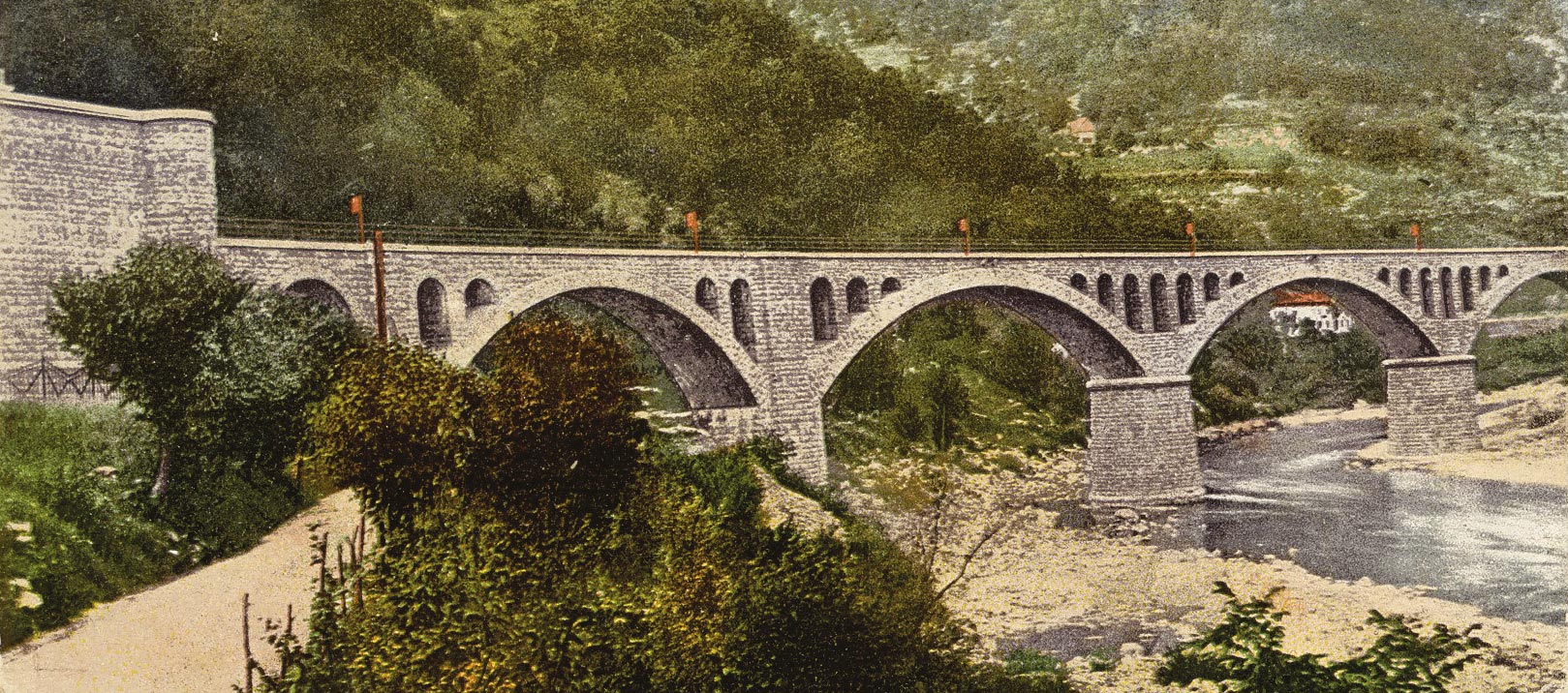
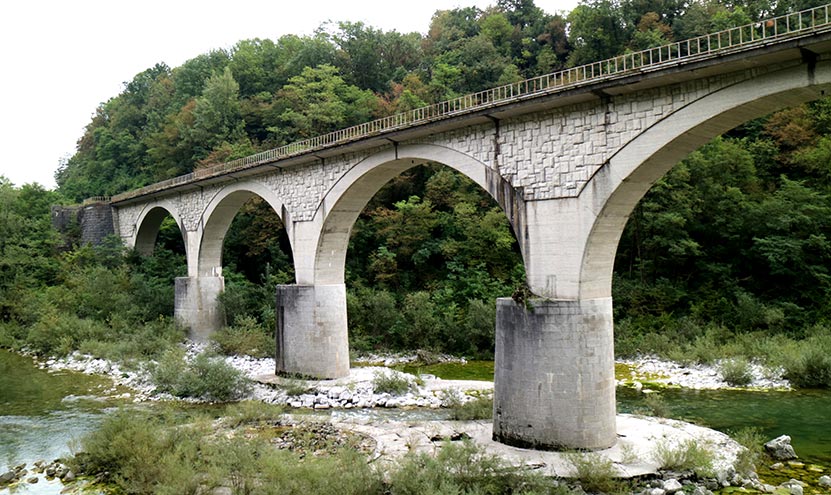
Photo by: G. Humar: Il ponte oggi




